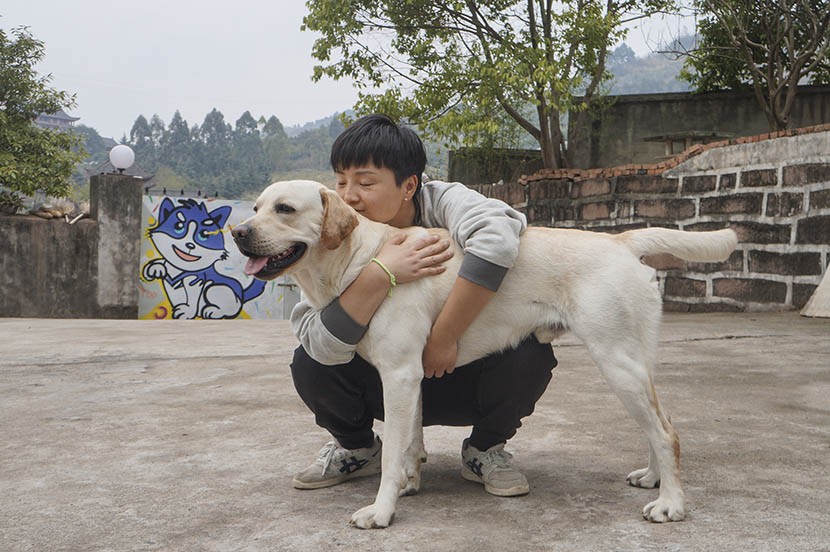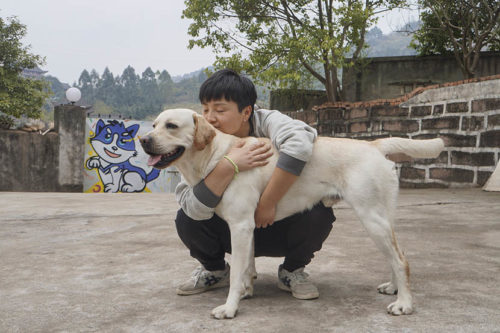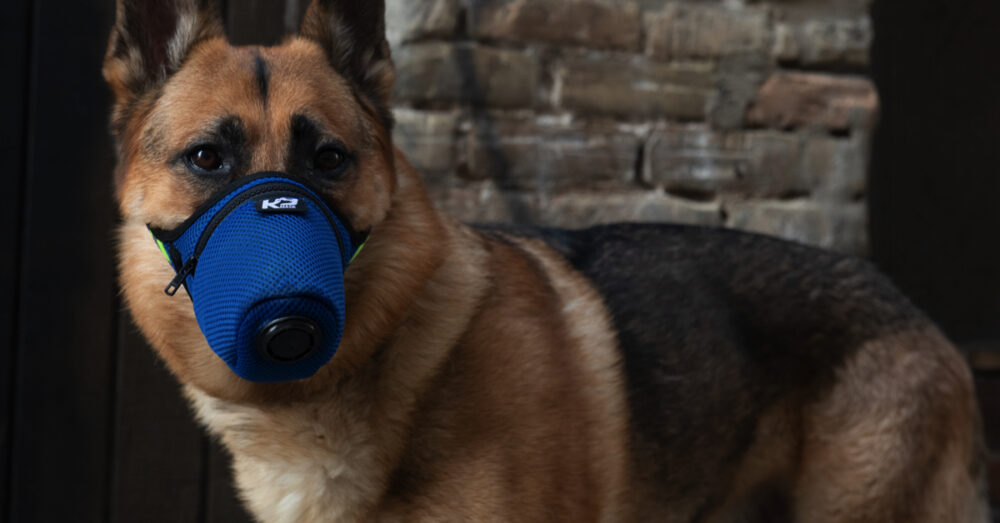
02 Jan Ways to Save Your Dog from Smoke
Washington State University’s College of Veterinary Medicine advises animal owners that wildfire smoke warnings apply to animals, too.
“Advisories that caution people to avoid heavy work or exercise outdoors and to remain indoors as much as possible should also pertain to our pets,” said Raelynn Farnsworth, the veterinarian who heads up the community practice service in the WSU Veterinary Teaching Hospital. “The same hazards to lungs faced by people are faced by our pets when conditions are like this.”
Special attention should be given to pregnant, elderly and young pets that are naturally more vulnerable, she said, and owners should avoid outdoor exercise with any pets until conditions improve.
“Short walks are OK for healthy dogs for bathroom purposes, but unless longer walks are necessary they should be avoided during air quality alert warnings,” she said. “For dogs with airway, breathing or cardiac compromises, a brief on-leash potty break is best.”
Dogs should not be made to keep up with owners who are jogging or bike riding, Farnsworth said, nor should pets be left outside while owners are away all day at work or school.
 “Watch the time of day,” she said, “as sometimes air quality can improve depending on a variety of conditions and a longer period outside may be okay.”
“Watch the time of day,” she said, “as sometimes air quality can improve depending on a variety of conditions and a longer period outside may be okay.”
“This is no time to take pet birds outside,” said Nickol Finch, head of WSU’s exotic and wildlife animal section in the teaching hospital. Birds are extremely susceptible to respiratory compromise from particulates in the air from any source, she said.
“For now, they need to stay inside and owners need to watch their condition carefully while we are under these advisories,” she said. Owners also are encouraged to make sure animals have access to clean and abundant water.
“Maintaining proper hydration when conditions are like this ensures animals and people have moist airways that can function well to move inhaled particulates up and out of the body,” said Steve Parish, the veterinarian who heads up agricultural animal services for the WSU veterinary hospital.
Below is a list of common signs of smoke inhalation from the Pet Poison Helpline of the American Society for the Prevention of Cruelty to Animals. For animals that cannot be sheltered indoors, such as livestock or horses, these signs can signal increasing respiratory distress in those species, too.
• Increased respiratory rates or difficulty breathing
• Unusual or excessive coughing, sneezing, vomiting or loss of appetite
• Swelling or inflammation of the mouth, eyes, skin or upper airway
• Open-mouthed breathing, especially in cats
• Squinting
• Uncoordinated walking, almost like being intoxicated
• Weakness/lethargy
• Increased salivation or foamy saliva
• Increased or unusual vocalization
• Unconsciousness
• Seizures
If animals exhibit any abnormal signs or appear to be in immediate distress, they should be evaluated by a veterinarian right away.
Sadly, the Live Safe Foundation estimates that 40,000 pets are killed each year by house fires, 1,000 of which are accidentally caused by pets. The American Kennel Club and ADT Security Services launched National Pet Fire Safety Day on July 15, 2009, to help owners prevent their pets from starting fires and develop a fire safety plan that increases their pet’s chance of survival. I hope you’ll consider these common safety tips to protect your pets.
1. Keep your dog away from open flames or sources of heat
Your pet or a roaming pet could tip over a grill and start a fire. If you live with dogs, I don’t have to tell you they like to stick their noses, paws, tongues, and even tails into potentially dangerous things, such as pots and pans on gas stovetops, barbecue grills, flickering candles, and warm fireplaces. Don’t leave these things unattended, and extinguish all flames inside and outside before leaving the house, even for a moment, or going to sleep. If you can’t monitor these situations, exclude your pet from the area or confine your pet in another area where he’ll be safe. And what about those nasty exposed electrical cords? Your dog may not intend to bite into an electrical cord, but he might if he’s teething or his favorite chew toy is nearby.
2. Train your dog to come when called
If you’re lucky, you’ll be home when a fire starts and your dog will respond promptly when you tell him to come, so you can both escape. I’ll bet when you went to dog-training classes the trainer gave you examples of how the “come” command could save your dog’s life. And when you make it outside, having your dog trained might prevent him from bolting if he panics. If he does bolt, all those photos you have on your phone of your dog will come in handy to create lost dog flyers. Remember what your dog is wearing — and keep the info up to date on her collar and tags.
3. Keep your dog’s ID up-to-date
Maybe you’re one of those owners who takes off his dog’s collar when he’s in the house. Please don’t. If he bolts, his collar with up-to-date contact information, along with a microchip that you’ve registered and kept current, could help you and your dog be reunited. It’s a good idea to provide your microchip registry with the names and contact information of relatives, friends, or neighbors who have agreed in advance to temporarily care for your dog if you are unable to do so. Put a screen on your fireplace and a collar on your dog. http://tinyurl.com/mntnbdp
4. Install smoke detectors and check them regularly
Of course, the piercing sound of the smoke detector and the smell of smoke may scare your dog and send him scurrying for safety. If your dog has places where he hides when he’s scared, you could waste precious time searching for him. Make sure all family members know where your dog likes to hide. What if you can’t find your dog and have to leave the house? Open a door that leads to the outside, and once you’ve escaped, call your dog. Hopefully, he’ll hear your voice and come running. Maybe he’s already outside with another family member — that’s another reason why it’s so important for everyone to swiftly gather in a designated meeting spot.
5. Give a neighbor a spare key
A fire may break out when you or other family members aren’t home. That’s why it’s a good idea for you and your dog to know your neighbors. If you’re comfortable, give your neighbors keys to your house, and be sure they know your dog’s hiding spots. Of course, a fire may break out when your neighbors aren’t home, either. If you have an alarm monitoring service, let it know that you have dogs and how many. Such services can instantly dispatch rescue personnel to your house if a fire breaks out.
6. Let rescuers know about your pets
The more you can do to alert rescue personnel that you have a dog or dogs, the better. Put static-cling emergency stickers on windows near all your house doors leading to the outside. Static cling stickers adhere to glass, but can also easily be updated or removed if pets no longer reside in the house. (In the old days, people affixed permanent rescue stickers to their doors. These stickers were difficult to remove and rescue personnel were often hesitant to risk their lives to save a pet who might no longer be in the house or no longer belong to the currently family living in the house.)
7. Once you’re safe, check your dog for injury and smoke inhalation
Once you and your dog have reached safety, you can care for him if he’s hurt. Your chances of succeeding and avoiding injury to yourself or your dog may be increased if you’ve taken a pet first aid class. Check with rescue personnel about special pet oxygen masks if your dog is having trouble breathing. Even if the fire is minor and your dog appears normal, have him examined right away by your veterinarian or an emergency animal hospital. Smoke inhalation can be fatal or lead to other complications, such as pneumonia or bronchitis.
Hopefully, you will never experience a house fire. But if you do, this information may increase your dog’s chance of survival.




Sorry, the comment form is closed at this time.